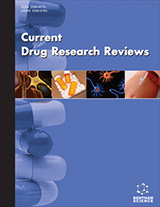
Abstract
Valsartan is an orally active non-peptide angiotensin receptor antagonist, an effective and well-tolerated anti-hypertensive drug. Besides its antihypertensive action, it has clinical implications in many other disorders, like heart failure (HF), arrhythmia, chronic kidney disease (CKD), diabetic complications (DM), atherosclerosis, etc. Besides angiotensin receptor blocking activity, valsartan reduces circulating levels of biochemical markers, such as hs-CRP, which is responsible for its anti-inflammatory and anti-oxidant activity. Moreover, valsartan also acts by inhibiting or inducing various signalling pathways, such as inducing autophagy via the AKT/mTOR/S6K pathway or inhibiting the TLR/NF-kB pathway. The current review exhaustively discusses the therapeutic implications of valsartan with specific emphasis on the mechanism of action in various disorders. The article provides a detailed spectrum of the therapeutic profile of valsartan and will likely be very useful to researchers working in the relevant research areas.
Keywords: Angiotensin-II type-1 receptor, atherosclerosis, chronic kidney disease, diabetes mellitus, valsartan, non-peptide angiotensin receptor.
[http://dx.doi.org/10.1177/153537020122600205] [PMID: 11446443]
[http://dx.doi.org/10.1016/j.lfs.2016.03.021] [PMID: 26979771]
[http://dx.doi.org/10.1007/s00424-009-0725-4] [PMID: 19763608]
[http://dx.doi.org/10.1097/00004872-200308000-00001] [PMID: 12872031]
[http://dx.doi.org/10.1097/MNH.0b013e3283437fcd] [PMID: 21245762]
[http://dx.doi.org/10.1161/CIRCULATIONAHA.106.678342] [PMID: 17606856]
[http://dx.doi.org/10.2147/TCRM.S234772] [PMID: 32848403]
[http://dx.doi.org/10.1016/j.hrthm.2008.02.025] [PMID: 18456194]
[http://dx.doi.org/10.1016/S1359-6101(03)00044-3] [PMID: 12948523]
[http://dx.doi.org/10.3109/03639045.2012.693502] [PMID: 22670860]
[http://dx.doi.org/10.52711/0974-360X.2022.00881]
[http://dx.doi.org/10.1208/s12249-015-0388-8] [PMID: 26381913]
[http://dx.doi.org/10.1038/hr.2016.72] [PMID: 27334058]
[http://dx.doi.org/10.1159/000500038] [PMID: 31307032]
[http://dx.doi.org/10.1161/01.HYP.0000034745.98129.EC] [PMID: 12364357]
[http://dx.doi.org/10.1016/j.clinthera.2010.03.004] [PMID: 20399995]
[http://dx.doi.org/10.1007/s002280050406] [PMID: 9551704]
[http://dx.doi.org/10.2165/00003495-200262130-00015] [PMID: 12215069]
[http://dx.doi.org/10.2165/00003495-199754020-00009] [PMID: 9257084]
[http://dx.doi.org/10.1007/s002280050259] [PMID: 9174680]
[http://dx.doi.org/10.1038/s41581-019-0244-2] [PMID: 32024986]
[http://dx.doi.org/10.1161/HYPERTENSIONAHA.109.141887] [PMID: 19933923]
[http://dx.doi.org/10.1007/s11906-020-1017-9] [PMID: 32016791]
[http://dx.doi.org/10.3892/br.2015.458] [PMID: 26171161]
[http://dx.doi.org/10.1038/s41598-019-42113-0]
[http://dx.doi.org/10.1038/sj.jhh.1000991] [PMID: 10854085]
[http://dx.doi.org/10.1016/S0895-7061(99)00082-5] [PMID: 10232502]
[http://dx.doi.org/10.1111/j.1742-1241.2009.02028.x] [PMID: 19392925]
[http://dx.doi.org/10.1111/j.1524-6175.2001.01136.x] [PMID: 11588406]
[http://dx.doi.org/10.1161/HYPERTENSIONAHA.116.07289] [PMID: 27160204]
[http://dx.doi.org/10.1161/HYPERTENSIONAHA.116.08484] [PMID: 27849566]
[http://dx.doi.org/10.1016/j.jacc.2019.01.018] [PMID: 30846338]
[http://dx.doi.org/10.1136/heartjnl-2020-318074] [PMID: 33452121]
[http://dx.doi.org/10.1186/s40608-018-0190-8] [PMID: 29692916]
[http://dx.doi.org/10.1161/01.HYP.0000154361.47683.d3] [PMID: 15630041]
[http://dx.doi.org/10.4330/wjc.v12.i8.373] [PMID: 32879702]
[http://dx.doi.org/10.1016/j.cardfail.2017.12.010] [PMID: 29325796]
[http://dx.doi.org/10.1007/s00392-019-01440-y] [PMID: 30788621]
[http://dx.doi.org/10.1016/j.ijcard.2018.06.060] [PMID: 30420146]
[http://dx.doi.org/10.1155/2022/5054511] [PMID: 35979006]
[http://dx.doi.org/10.1186/s12902-021-00844-0]
[http://dx.doi.org/10.1016/j.pcad.2019.11.009] [PMID: 31759953]
[http://dx.doi.org/10.1007/s40292-020-00398-7] [PMID: 32705504]
[http://dx.doi.org/10.1152/advan.00177.2016] [PMID: 28377431]
[http://dx.doi.org/10.1016/j.ddstr.2013.11.002]
[http://dx.doi.org/10.1016/j.ijcard.2022.01.004] [PMID: 34998946]
[http://dx.doi.org/10.1002/ejhf.592] [PMID: 27207191]
[http://dx.doi.org/10.1056/NEJMoa010713] [PMID: 11759645]
[http://dx.doi.org/10.1111/j.1524-6175.2005.05264.x] [PMID: 16596029]
[http://dx.doi.org/10.1002/ehf2.13002] [PMID: 32960491]
[http://dx.doi.org/10.1002/ejhf.1056] [PMID: 29193563]
[http://dx.doi.org/10.1161/hc4501.098928] [PMID: 11705816]
[http://dx.doi.org/10.1161/hh0302.104531] [PMID: 11861418]
[http://dx.doi.org/10.1161/01.CIR.0000017502.58595.ED] [PMID: 12045167]
[http://dx.doi.org/10.1016/j.atherosclerosis.2008.05.022] [PMID: 18585721]
[http://dx.doi.org/10.1002/ejhf.1984] [PMID: 32840930]
[http://dx.doi.org/10.1093/eurheartj/suaa140] [PMID: 33727901]
[http://dx.doi.org/10.1002/ejhf.1342] [PMID: 30520545]
[http://dx.doi.org/10.1016/S0002-9343(02)01253-6] [PMID: 12401530]
[http://dx.doi.org/10.1016/j.jacc.2007.09.026] [PMID: 18174029]
[http://dx.doi.org/10.1016/j.yjmcc.2020.01.012] [PMID: 32006532]
[http://dx.doi.org/10.1161/CIRCRESAHA.108.175463] [PMID: 18723446]
[http://dx.doi.org/10.1016/j.yjmcc.2016.12.006] [PMID: 28007541]
[http://dx.doi.org/10.1093/cvr/cvv275] [PMID: 26705366]
[http://dx.doi.org/10.1093/cvr/cvw073] [PMID: 27056895]
[http://dx.doi.org/10.1016/S0008-6363(02)00289-4] [PMID: 12062342]
[http://dx.doi.org/10.1016/j.mce.2004.05.006] [PMID: 15249121]
[http://dx.doi.org/10.1016/S0735-1097(03)00464-9] [PMID: 12821247]
[http://dx.doi.org/10.1161/CIRCULATIONAHA.104.530592] [PMID: 16534027]
[http://dx.doi.org/10.1038/sj.bjp.0703860] [PMID: 11159730]
[http://dx.doi.org/10.1007/s00395-007-0641-8] [PMID: 17268887]
[http://dx.doi.org/10.1016/j.ijcard.2007.03.106] [PMID: 17509704]
[http://dx.doi.org/10.1038/ajh.2008.217] [PMID: 18566593]
[http://dx.doi.org/10.1161/01.CIR.101.22.2612] [PMID: 10840013]
[http://dx.doi.org/10.1016/S0008-6363(01)00515-6] [PMID: 12062348]
[http://dx.doi.org/10.1093/eurheartj/ehi668] [PMID: 16311236]
[http://dx.doi.org/10.1016/j.ejphar.2020.173120] [PMID: 32325147]
[http://dx.doi.org/10.1016/j.ehj.2004.04.025] [PMID: 15231367]
[http://dx.doi.org/10.2174/1573403X16999200817170619] [PMID: 33109063]
[http://dx.doi.org/10.3892/mmr.2013.1708] [PMID: 24084854]
[http://dx.doi.org/10.1161/CIRCULATIONAHA.109.928242] [PMID: 20837911]
[http://dx.doi.org/10.1038/nature10992] [PMID: 22535248]
[http://dx.doi.org/10.1146/annurev.pathmechdis.2.010506.091842] [PMID: 18039129]
[http://dx.doi.org/10.1016/j.cell.2007.12.018] [PMID: 18191218]
[http://dx.doi.org/10.1007/s11010-009-0098-1] [PMID: 19370315]
[http://dx.doi.org/10.1016/j.cardfail.2004.01.012] [PMID: 15470656]
[http://dx.doi.org/10.1161/HYPERTENSIONAHA.106.080994] [PMID: 17485602]
[http://dx.doi.org/10.1161/01.CIR.102.4.458] [PMID: 10908220]
[http://dx.doi.org/10.1007/s11033-021-07109-y] [PMID: 35067816]
[http://dx.doi.org/10.1016/j.biopha.2018.07.060] [PMID: 30119167]
[http://dx.doi.org/10.1016/j.biopha.2018.11.128] [PMID: 30841463]
[PMID: 20436217]
[http://dx.doi.org/10.1002/lt.23693] [PMID: 23836400]
[PMID: 25219839]
[http://dx.doi.org/10.1111/j.1525-1594.2011.01386.x] [PMID: 22097982]
[http://dx.doi.org/10.2353/ajpath.2008.070974] [PMID: 18535174]
[http://dx.doi.org/10.1097/FJC.0b013e3181c87e53] [PMID: 19920765]
[http://dx.doi.org/10.1007/s10557-011-6339-z] [PMID: 21987107]
[http://dx.doi.org/10.1161/HYPERTENSIONAHA.113.02902] [PMID: 24420538]
[http://dx.doi.org/10.1385/IR:30:1:073] [PMID: 15258311]
[http://dx.doi.org/10.1016/j.carpath.2005.03.007] [PMID: 16009315]
[http://dx.doi.org/10.1016/S0098-2997(00)00005-4] [PMID: 11044550]
[http://dx.doi.org/10.1161/01.ATV.0000203525.62147.28] [PMID: 16410455]
[http://dx.doi.org/10.1089/ars.2008.2220] [PMID: 18783313]
[http://dx.doi.org/10.1161/01.ATV.0000160340.72641.87] [PMID: 15731497]
[http://dx.doi.org/10.1161/01.ATV.0000021412.56621.A2] [PMID: 12171785]
[http://dx.doi.org/10.1001/archinte.163.10.1155] [PMID: 12767951]
[http://dx.doi.org/10.1155/2014/689360] [PMID: 24804145]
[http://dx.doi.org/10.1038/s41598-019-42994-1]
[http://dx.doi.org/10.2174/156801605774322355] [PMID: 16250862]
[http://dx.doi.org/10.1016/j.cmet.2014.09.013] [PMID: 25448702]
[http://dx.doi.org/10.1016/j.pharmthera.2010.11.002] [PMID: 21111758]
[http://dx.doi.org/10.1177/1074248415575967] [PMID: 25818930]
[http://dx.doi.org/10.1016/j.yexmp.2007.08.014] [PMID: 17945211]
[http://dx.doi.org/10.1253/circj.CJ-11-1102] [PMID: 22473458]
[http://dx.doi.org/10.1111/j.1365-2559.2004.01771.x] [PMID: 14764057]
[http://dx.doi.org/10.1074/jbc.C000290200] [PMID: 10811631]
[http://dx.doi.org/10.1093/qjmed/95.1.3]
[http://dx.doi.org/10.2337/diabetes.50.6.1482]
[http://dx.doi.org/10.1016/j.placenta.2022.06.014] [PMID: 35780519]
[http://dx.doi.org/10.1291/hypres.31.987] [PMID: 18712054]
[http://dx.doi.org/10.1093/eurheartj/ehp363] [PMID: 19723695]
[http://dx.doi.org/10.1007/s12020-012-9675-2] [PMID: 22588951]
[http://dx.doi.org/10.1038/jhh.2010.73] [PMID: 20664555]
[http://dx.doi.org/10.1161/01.ATV.0000245830.29764.84] [PMID: 16973967]
[http://dx.doi.org/10.1038/nri3063] [PMID: 21941295]
[http://dx.doi.org/10.2119/molmed.2014.00195] [PMID: 25685964]
[http://dx.doi.org/10.1073/pnas.0708647105] [PMID: 18337495]
[http://dx.doi.org/10.1016/j.ejvs.2010.04.012] [PMID: 20547081]
[http://dx.doi.org/10.1016/j.acvd.2010.08.002] [PMID: 21074124]
[http://dx.doi.org/10.1016/j.arr.2010.11.001] [PMID: 21109027]
[http://dx.doi.org/10.1097/00041433-200210000-00010] [PMID: 12352018]
[http://dx.doi.org/10.1016/j.jdiacomp.2016.12.002] [PMID: 28012835]
[http://dx.doi.org/10.1371/journal.pone.0158765]
[http://dx.doi.org/10.1001/archinte.166.17.1884] [PMID: 17000946]
[http://dx.doi.org/10.1093/eurheartj/eht386] [PMID: 24164864]
[http://dx.doi.org/10.1161/CIR.0000000000000664] [PMID: 30852913]
[http://dx.doi.org/10.1007/s11739-019-02111-6] [PMID: 31147823]
[http://dx.doi.org/10.1016/j.ejphar.2021.174288] [PMID: 34216577]
[http://dx.doi.org/10.1146/annurev.pathol.4.110807.092150] [PMID: 21261520]
[http://dx.doi.org/10.1186/s13098-019-0403-4] [PMID: 30679960]
[http://dx.doi.org/10.4239/wjd.v5.i3.393] [PMID: 24936261]
[http://dx.doi.org/10.2337/diacare.27.2007.S79] [PMID: 14693934]
[http://dx.doi.org/10.2147/IJNRD.S40172] [PMID: 25342915]
[http://dx.doi.org/10.1002/tox.22758] [PMID: 31062909]
[http://dx.doi.org/10.7717/peerj.9196] [PMID: 32596035]
[http://dx.doi.org/10.1681/ASN.2016070734] [PMID: 28255001]
[PMID: 21897755]
[http://dx.doi.org/10.1053/j.ackd.2014.12.001] [PMID: 25704348]
[http://dx.doi.org/10.1016/j.cjca.2016.02.070] [PMID: 27118293]
[http://dx.doi.org/10.1007/s00395-013-0386-5]
[http://dx.doi.org/10.1097/FJC.0b013e318159378b] [PMID: 18091589]
[http://dx.doi.org/10.1159/000452411] [PMID: 27880955]
[http://dx.doi.org/10.1042/CS20130223] [PMID: 24195695]
[http://dx.doi.org/10.1097/01.hjh.0000220405.38622.23] [PMID: 16601572]
[http://dx.doi.org/10.1097/CEJ.0b013e32832f9c00] [PMID: 19687742]
[http://dx.doi.org/10.1124/jpet.104.072066] [PMID: 15302895]
[http://dx.doi.org/10.1038/sj.ki.5001983] [PMID: 17063175]
[http://dx.doi.org/10.1080/10641963.2017.1407333] [PMID: 29172824]
[http://dx.doi.org/10.1016/j.biopha.2019.108954] [PMID: 31108352]
[http://dx.doi.org/10.1016/S0168-8227(00)00160-1] [PMID: 10936664]
[http://dx.doi.org/10.1097/00004872-200304000-00020] [PMID: 12658023]
[http://dx.doi.org/10.1046/j.1523-1755.2003.00237.x] [PMID: 12969138]
[http://dx.doi.org/10.1016/j.amjhyper.2004.10.018] [PMID: 15831366]
[http://dx.doi.org/10.1016/j.metabol.2015.09.013] [PMID: 26481513]
[http://dx.doi.org/10.1055/s-2002-35418] [PMID: 12439785]
[http://dx.doi.org/10.1111/j.1463-1326.2005.00566.x] [PMID: 17199717]
[http://dx.doi.org/10.2215/CJN.03380410] [PMID: 20671225]
[http://dx.doi.org/10.1016/j.cytogfr.2011.06.002] [PMID: 21757394]
[http://dx.doi.org/10.1016/S1043-2760(01)00524-0] [PMID: 11854024]
[http://dx.doi.org/10.1161/01.ATV.20.6.1595] [PMID: 10845877]
[http://dx.doi.org/10.1161/01.HYP.0000078490.59735.6E] [PMID: 12796280]
[http://dx.doi.org/10.1111/j.1440-1797.2007.00764.x] [PMID: 17371337]
[http://dx.doi.org/10.1210/jc.2002-021836] [PMID: 12970329]
[http://dx.doi.org/10.1016/j.amjhyper.2006.09.016] [PMID: 17386352]
[http://dx.doi.org/10.1016/j.biopha.2018.06.152] [PMID: 29990844]
[http://dx.doi.org/10.1001/jama.285.5.643] [PMID: 11176874]
[http://dx.doi.org/10.1007/s00535-006-1995-7] [PMID: 17322989]
[http://dx.doi.org/10.1592/phco.2005.25.9.1213] [PMID: 16164395]
[PMID: 11132026]
[http://dx.doi.org/10.1152/ajpgi.00058.2003] [PMID: 12686508]
[http://dx.doi.org/10.1016/j.regpep.2007.10.004] [PMID: 18023891]
[http://dx.doi.org/10.17179/excli2021-3370] [PMID: 33628160]
[http://dx.doi.org/10.1097/01.EHX.0000481746.43677.e1]
[http://dx.doi.org/10.1001/archneur.58.9.1395] [PMID: 11559310]
[http://dx.doi.org/10.1101/cshperspect.a006189]
[http://dx.doi.org/10.3389/fendo.2013.00158] [PMID: 24298267]
[http://dx.doi.org/10.1038/hr.2013.51] [PMID: 23698805]
[http://dx.doi.org/10.1016/j.neulet.2009.11.033] [PMID: 19914330]
[http://dx.doi.org/10.5137/1019-5149.JTN.5855-12.1] [PMID: 23546897]
[http://dx.doi.org/10.1016/j.bbadis.2013.10.015] [PMID: 24189435]
[http://dx.doi.org/10.1177/1470320312459977] [PMID: 23060470]
[http://dx.doi.org/10.3797/scipharm.1203-06] [PMID: 23008812]
[http://dx.doi.org/10.1172/JCI31547] [PMID: 17965777]
[http://dx.doi.org/10.1038/nrendo.2009.106] [PMID: 19488073]
[http://dx.doi.org/10.1016/S0006-8993(00)02790-6] [PMID: 11119686]
[http://dx.doi.org/10.1080/10253890701350735] [PMID: 17514587]
[http://dx.doi.org/10.1017/S0954579419001779] [PMID: 32124708]
[http://dx.doi.org/10.1016/S0006-8993(00)02950-4] [PMID: 11119695]
[http://dx.doi.org/10.1177/1470320313516173] [PMID: 24496517]
[http://dx.doi.org/10.1152/ajpheart.00656.2001] [PMID: 11788425]
[http://dx.doi.org/10.1161/HYPERTENSIONAHA.120.16247] [PMID: 33342239]
[http://dx.doi.org/10.1371/journal.pone.0055471]
[http://dx.doi.org/10.1002/(SICI)1096-9896(200002)190:3<300::AID-PATH596>3.0.CO;2-I] [PMID: 10685064]
[http://dx.doi.org/10.2174/138161208783597335] [PMID: 18289069]
[http://dx.doi.org/10.1152/physrev.00011.2005] [PMID: 16601269]
[http://dx.doi.org/10.1155/2012/958298] [PMID: 22518299]
[http://dx.doi.org/10.1152/ajpheart.2000.278.2.H623] [PMID: 10666095]
[http://dx.doi.org/10.1016/S0021-9150(00)00552-9] [PMID: 11223432]
[http://dx.doi.org/10.1182/blood.V99.12.4443] [PMID: 12036874]
[http://dx.doi.org/10.1016/j.lfs.2014.06.021] [PMID: 25014676]
[http://dx.doi.org/10.33549/physiolres.934579] [PMID: 34062069]
[http://dx.doi.org/10.33549/physiolres.934579] [PMID: 34062069] [PMCID: PMC8820538]
 14
14 1
1



























